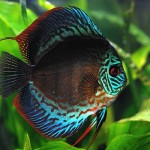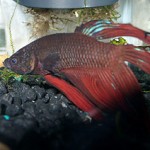Thinking of breeding bettas for the first time? Take care. You might want to think this over a thousand times before finally embarking on this new phase in betta fish care, even though that thousand times stuff sounds a bit silly. Still breeding betta fish is not as easy as keeping and taking care of a solitary betta, if you find it an easy thing at all. For sure it’s a far sight from raising guppies, who successfully pop out little ones faster than rabbits, with little trouble.
So ask yourself this – are you really ready, willing and able to devote the time required to care for betta fish and their brood? Because breeding bettas is not that easy. I mean it may not be all that tough once you’ve got all the things needed and you already know how to go about it step by step. But it takes time and proper timing so all your effort, time, and money spent won’t just go to waste.
All of which is to say it may not be such a great idea to breed bettas especially if you think you’re not ready for it since there are a lot of things you need to consider. And I mean seriously consider. To cover the basics here are the four C’s of betta breeding.
C #1: Choosing the Betta Parents
First, genes matter. You need to carefully select your breeding pair since this is obviously the key to producing colorful and vibrant offspring. Experience matters too. As does age. Your fish should be sexually mature and most bettas won’t reach such maturity until they are at least four months old. If you’re not sure how old the betta is, then judge it by the size and make sure it’s grown beyond 5 inches. You’ll also know the male betta is getting there if it regularly builds bubble nests and flares its fins in the presence of the opposite sex. On the other hand, you’ll know the female betta is breeding-ready if she displays a fat belly and a white spot is showing on her abdomen. In some females, vertical stripes may also appear. Also take note that breeding a male and female betta from a common parent is not a great idea since such a pairing could result to genetically defective offspring.
C #2: Conditioning the Bettas
Bettas have to be conditioned to withstand the rigors of breeding. That’s the second C. Basically toxin levels should be kept in check and a temperature range of 76-82 degrees should be maintained. But the key is to feed your breeding pair a high protein diet because they would obviously need to store up all the energy they can given how exhausting spawning is. To insure success feeding them nutrient rich live or frozen foods is highly recommended. It’s usually a good idea to increase the amount of food fed as well.
C #3: Creating the Ideal Breeding Tank Set Up
Clearly you can’t breed two bettas inside a community tank. Aside from being stressful you’re not giving them any privacy. So you need to set up a separate tank to be used for breeding. The tank size should be right sized and shaped. In other words not too narrow and not too wide. Also, you want the water level to be a little on the shallow side so the fry won’t have a hard time swimming vertically once they hatch.
The challenge here is to introduce the male and female without any deaths in the family. Some breeders use a divided tank set up so the two bettas can have the chance to get to know each other without risk of a misunderstanding which could result in injuries. Others also put the male betta in the tank first. And then the female is introduced in a separate bowl or a glass chimney (from an oil lamp). After their initial courting rituals would suggest a successful union the female is then released for the consummation of the relationship.
C# 4: Caring For The Fry
The last C is for fry care. You have to keep in mind that once the female betta releases her eggs her role is over. She should be taken out of the tank or may well go cannibal on you and eat the fry. This isn’t malicious or anything. It’s just that so much energy has been spent so it’s just normal for the female to become extremely hungry. So much for maternal instinct, huh?
Now at this point the biggest challenge with breeding bettas commences. That is taking care of the fry. Think of it. Maybe 300 hungry mouths to feed. You need to feed them with the right sized food (think teeny tiny) and set the water temp at 80 degrees. True to their nature, the diminutive males become prone to territorial disputes in next to no time. Which means you need to prepare, heat, and maintain individual containers for them. Do you have the means to provide up to 150 jars for your growing male fry?
Hopefully it’s dawning on you that this breeding thing may not be such a hot idea after all. Or at least it’s one that needs careful planning and consideration – and we didn’t even get into culling or what you’re going to do with 100 (plus) adult bettas. Which is to say thinking it over a thousand times doesn’t seem so silly now does it?

















wow! That’s so much work to do. I have a pair of Betta myself and i want to breed them. My female is ready she has vertical strips coming down and a white dot on her abdomen. But my problem is the male betta he doesn’t want to do anything, he only makes a few bubbles and that’s all. My male betta flares his fins but doesn’t want to make bubbles instead, he wants to get in fight with my female betta. What should I do?